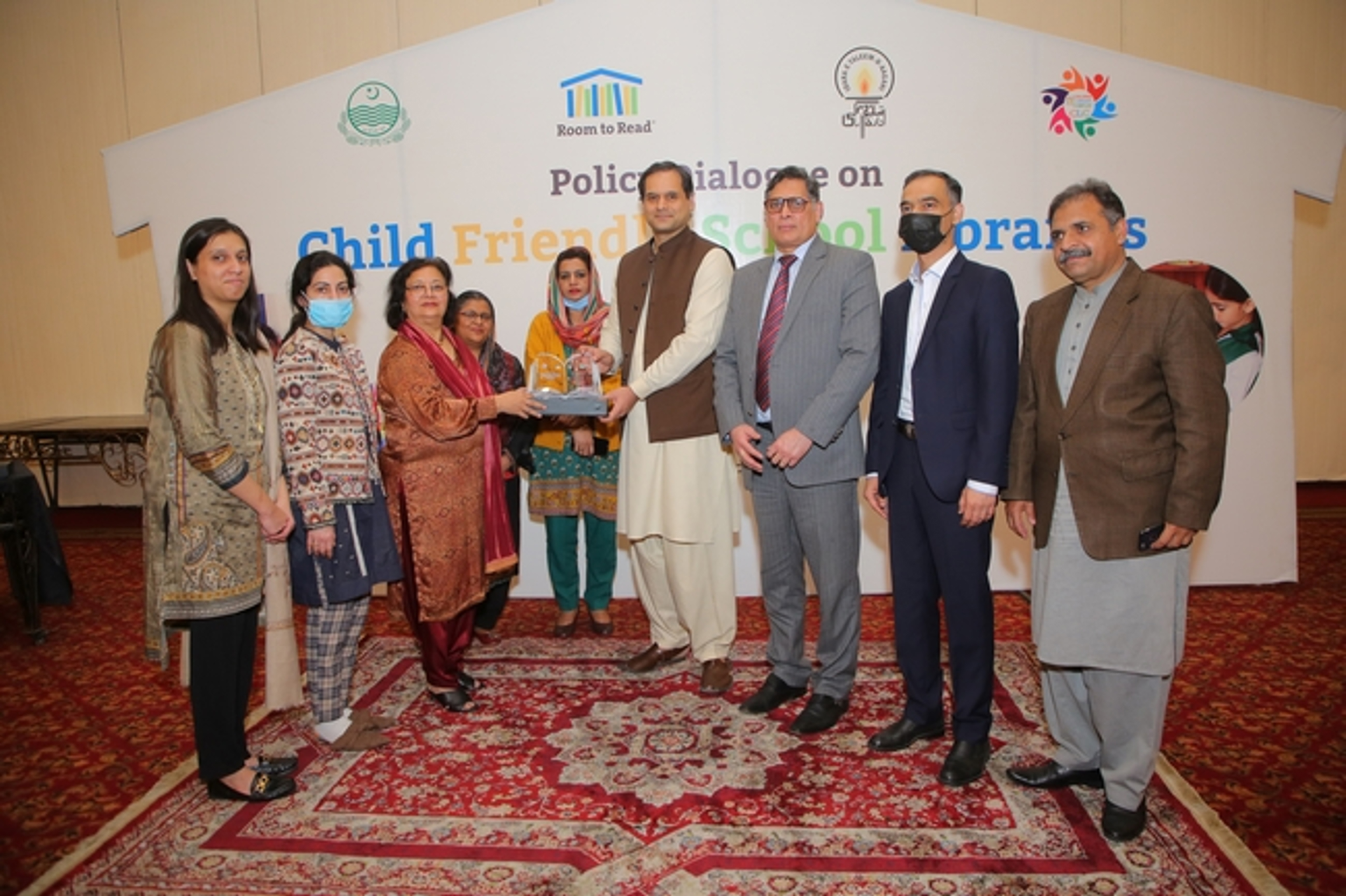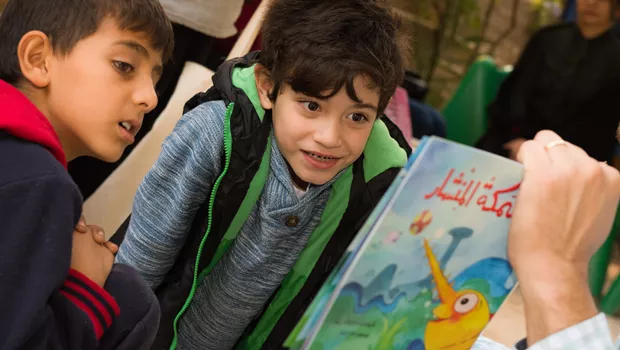A look inside Pakistan's educational landscape
At Room to Read, we recognize that potential is equally distributed, but opportunity is not. We are committed to ensuring that every child, regardless of the circumstances they were born into, can access a quality education and unlock their full potential. As part of this commitment, we work to identify countries and regions where students are facing deep educational inequalities and determine if we have the right expertise and resources to support local partners engaged in our areas of focus — early grade literacy and gender equality. One of these countries is Pakistan.
Pakistan is home to nearly 242 million people, making it the fifth largest country in the world, with a large population of school-age children. As a result of ongoing political instability, the Pakistani education system has long faced many challenges. According to UNICEF, Pakistan has the world’s second-highest number of out-of-school children with an estimated 22.8 million children aged 5–16 not attending school, which represents 44 percent of the total population in this age group. There are further educational disparities based on gender, socioeconomic status and geography, meaning that children in historically low-income communities often face even greater barriers to their education.
Pakistani children who are enrolled in public schools often do not receive a quality education. Most children who start public school drop out by the age of 9, and only 3 percent of students in public school graduate from Grade 12. Furthermore, only 50 percent of students who complete five years of primary school can read with comprehension. Unsurprisingly, this has led to a lack of confidence in the public education system. Higher-income families will often turn to private schools, whereas lower-income families may pull their children out of school entirely, opting to have their children support the family by working.
A lack of teacher support and training is another pressing challenge for the Pakistani education system, and ever-changing Pakistani education policies make it difficult for educators to implement consistent and meaningful lesson plans. For example, the national language of instruction has changed numerous times over the years, from Punjab to Urdu to English, then later back to Urdu. In the province of Sindh, Pakistan’s second-most populous province, many teachers are native Sindhi speakers and struggle to teach their students in Urdu. This has also meant that many children aren’t able to access books in their local language.
These are just a handful of the challenges we discovered when we first conducted a feasibility study in Pakistan in 2018. Given Room to Read’s longstanding presence in South Asia, and our breadth of expertise in early childhood literacy, we were uniquely positioned to implement aspects of our Literacy Program in Pakistan in collaboration with local organizations to support children across various regions of the country.
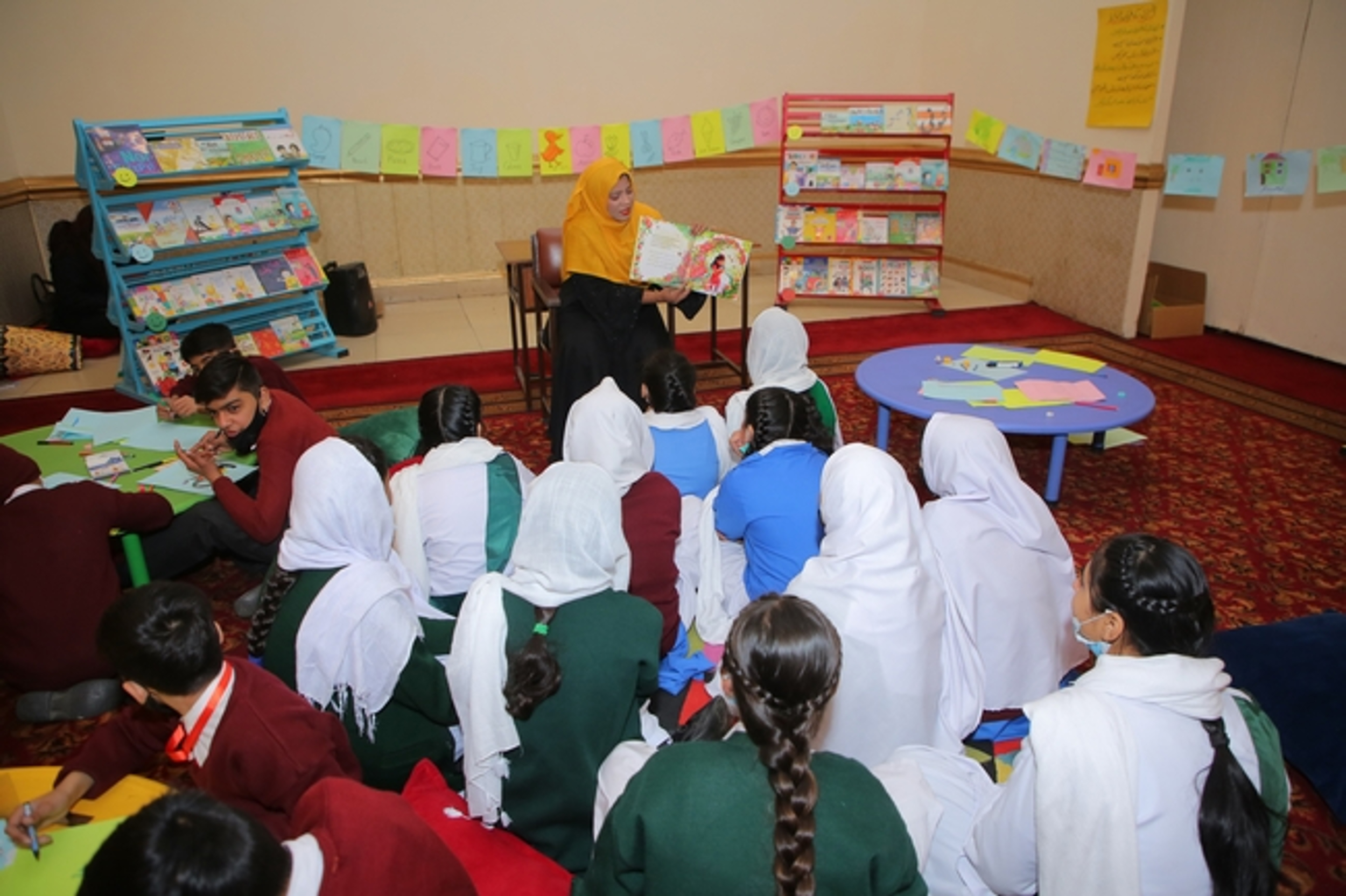
Room to Read's work in Pakistan
Over the past two years, Room to Read launched our first project in Pakistan, with the goal to foster a habit of reading among children. In partnership with Lahore-based Idara-e-Taleem-o-Aagahi (Center of Education and Consciousness) or “ITA,” Room to Read established libraries in 20 government primary schools in Punjab province, Bahawalpur and Lahore districts, and adapted 28 Room to Read storybook titles into Urdu, a local language for many children in Pakistan. Over the past year, Room to Read and ITA established an additional four government primary schools and translated 25 of the adapted titles into a second Pakistan language, Sindhi.
This project launched amid COVID-19 school closures, which has made implementing various programmatic elements more challenging. Room to Read’s government primary school libraries could not fully open until August of 2021. In our experience around the world, the success of newly developed libraries increases significantly with ongoing monitoring and support. We will continue to provide this support, in collaboration with ITA, Punjab School Education Department officials and community leaders, through the end of 2022 and beyond.
Learn more about the second phase of our work in Pakistan, which launched in April 2022 and will continue through May 2024, below.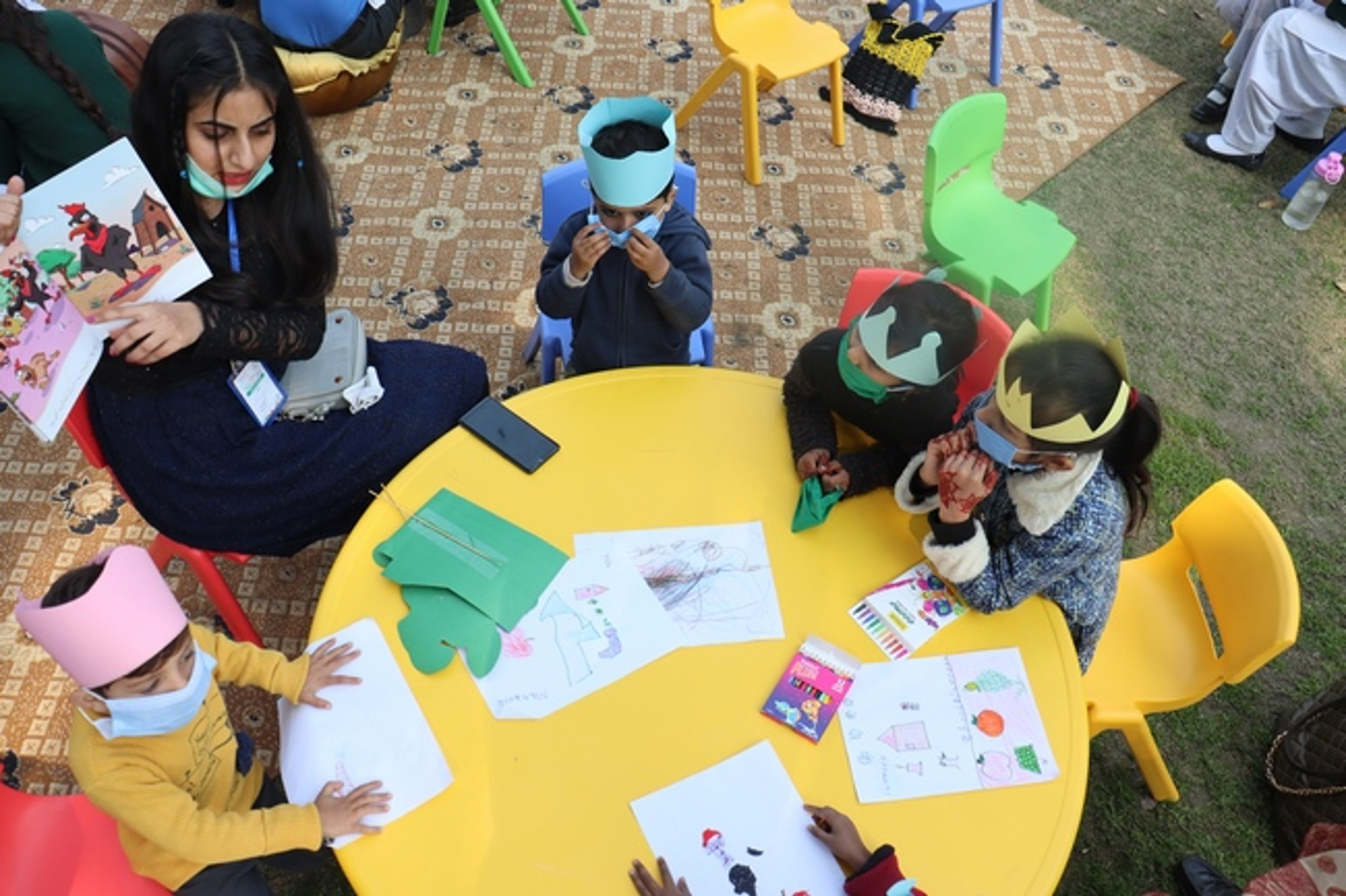
Providing continued school and community support for new libraries
A key element in the long-term success of newly developed libraries is ongoing support and monitoring. Room to Read provides this support, which includes regular trainings for teachers, principals and librarians, ongoing community engagement to help develop a habit of reading in the home and reinforcement of library time as part of the school calendar. Strong reading practices require the development of a strong reading culture, and our continued support will increase the likelihood that libraries create that reading culture within schools, in families and throughout the communities we serve.
Libraries that benefit children and communities in this way also provide essential examples of success to educational policy makers in Punjab province and across Pakistan. In the years to come, we will expand on government engagement in training and support activities with the goal of building ownership and support for the primary school libraries at policy-maker levels. 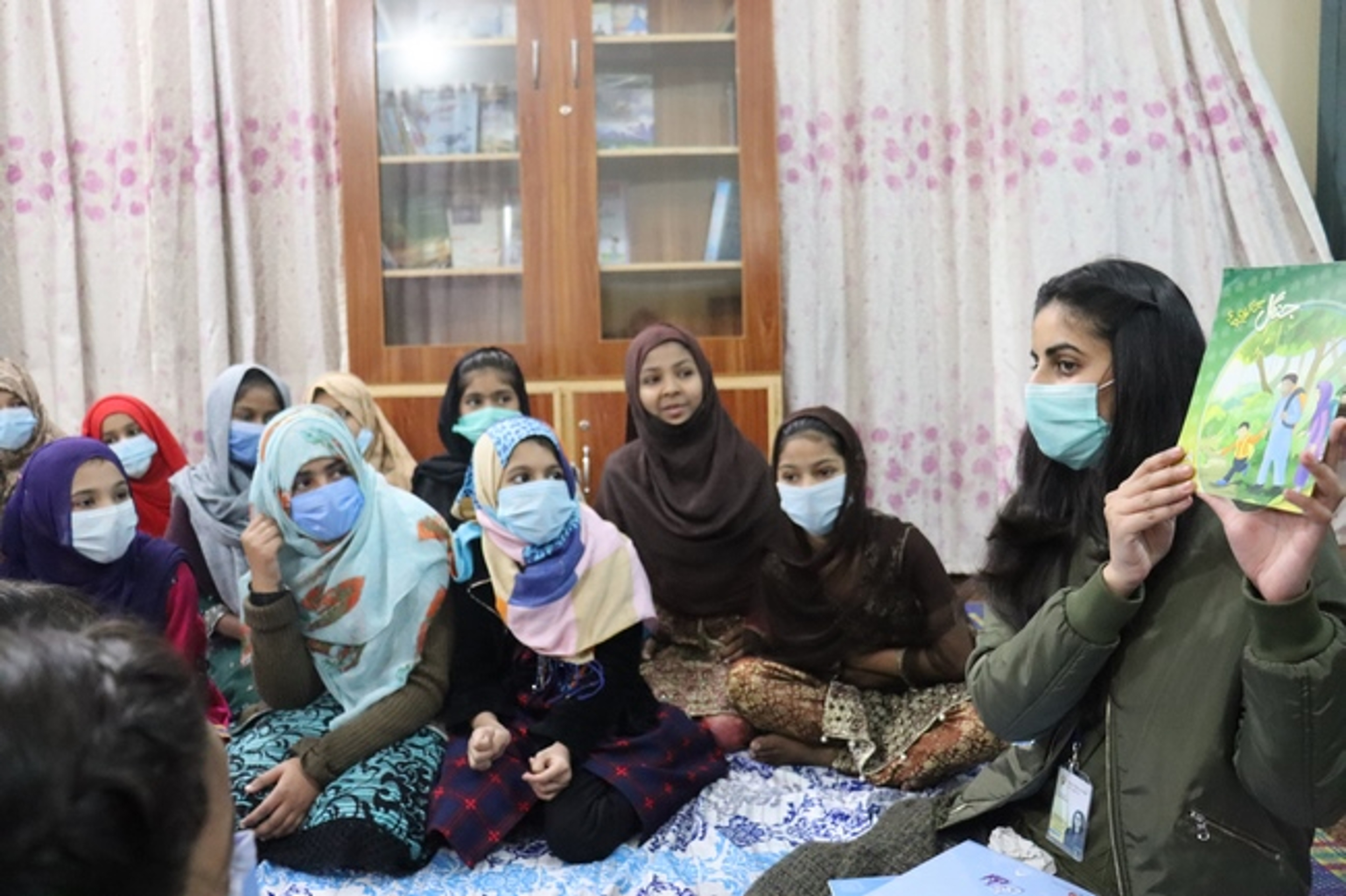
Establishing an additional 10 public school libraries with reading activities training
Building on the success of our initial libraries, we now have an exciting opportunity to help establish an additional 10 public school libraries that will benefit thousands more children. In the next two years, Room to Read will also develop a second library model for Pakistan, focusing specifically on classroom libraries, which are better suited for schools without space for a stand-alone library. This nuanced approach will help bring our library model into smaller schools in rural and remote regions.
The new classroom libraries will also emphasize three best practices of a child-friendly library to bolster a habit of reading:
- Library period. One of the most effective ways to make reading more central in children’s lives is to increase their exposure to books through regular library visits that focus on reading simply for enjoyment. Teachers quickly see this time of joy and curiosity increases children’s interest in reading and reading skills. In collaboration with partner organizations, we will work with schools to establish a required library period for each class.
- Ideal Book Collection for schools. A library period and reading time can only be successful if students have access to high-quality early grade children’s books. Room to Read has developed an Ideal Book Collection tool to help determine the minimum number and type of books (fiction, non-fiction, etc.) needed for children of all reading abilities to promote the habit of reading. Room to Read will utilize the Ideal Book Collection list to procure and print books for the new libraries.
- Parent and community engagement. Key to building a habit of reading is raising awareness among parents and caregivers of the importance of the library and encouraging the practice of reading at home. Local community members are trained by Room to Read to provide guidance and support to parents on how to foster a habit of reading at home. Parents and community members are involved as key stakeholders in library management activities to increase local ownership and library sustainability.
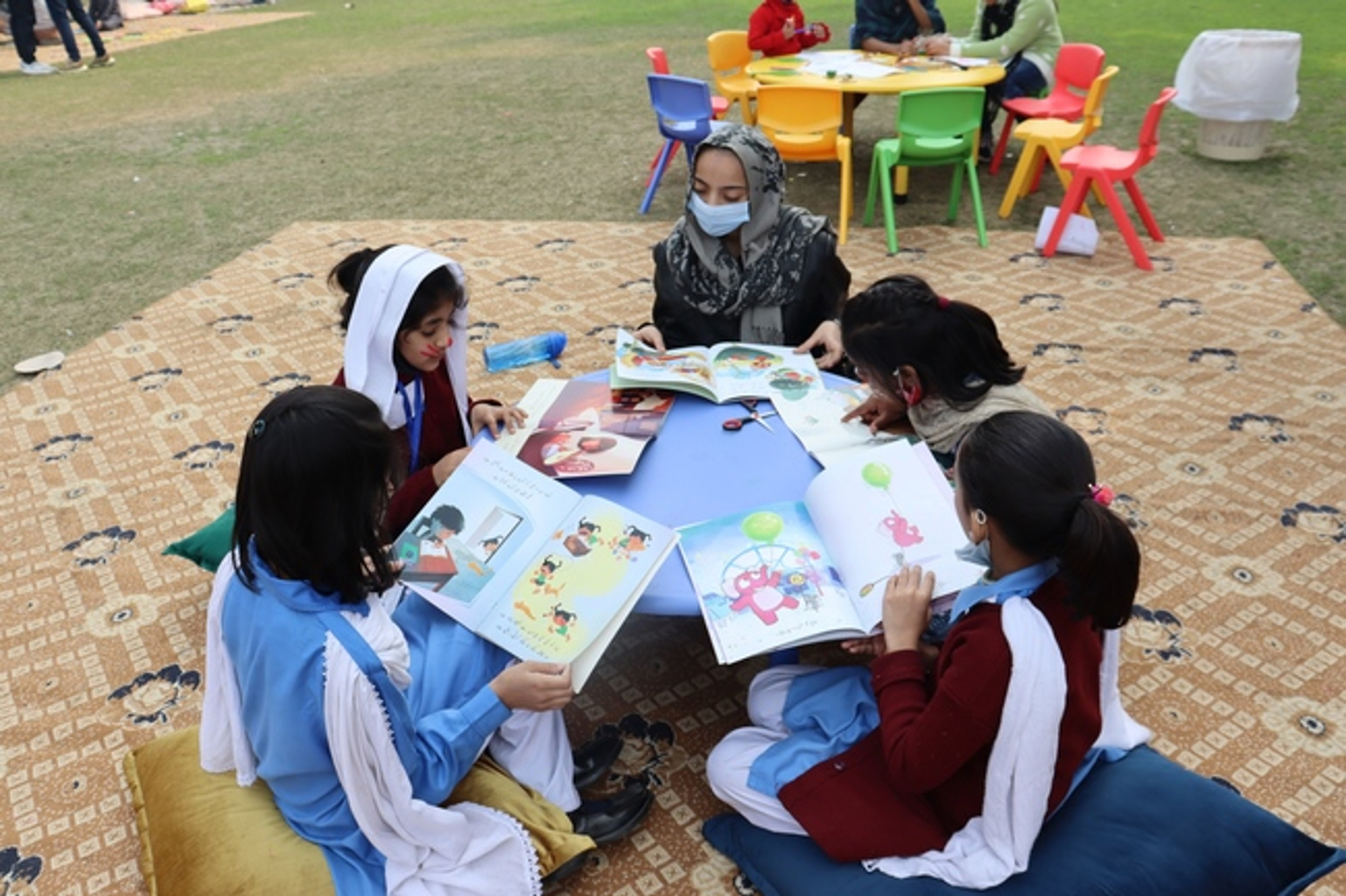
Creating and publishing additional high-quality storybooks for early grade readers
The storybooks that were developed as part of our initial project work in Pakistan have already benefited children throughout the country. We developed 28 storybook titles in Urdu for young Pakistani learners and distributed these books to 2,000 libraries across Pakistan, benefitting at least 33,000 children. This was a successful first step in closing gaps in the children’s book market. Nevertheless, we have found in our market analysis that there continue to be insufficient Urdu-language storybooks to fill the minimum number and type of books needed to promote a habit of reading.
To address this, we plan to adapt an additional 20 storybook titles into Urdu. This process is not simply a translation activity. The books need to be redesigned for the local language and be carefully reviewed and edited to ensure words, characters and storylines are relevant to young readers. These titles will also be distributed to schools, where they will benefit thousands of children.
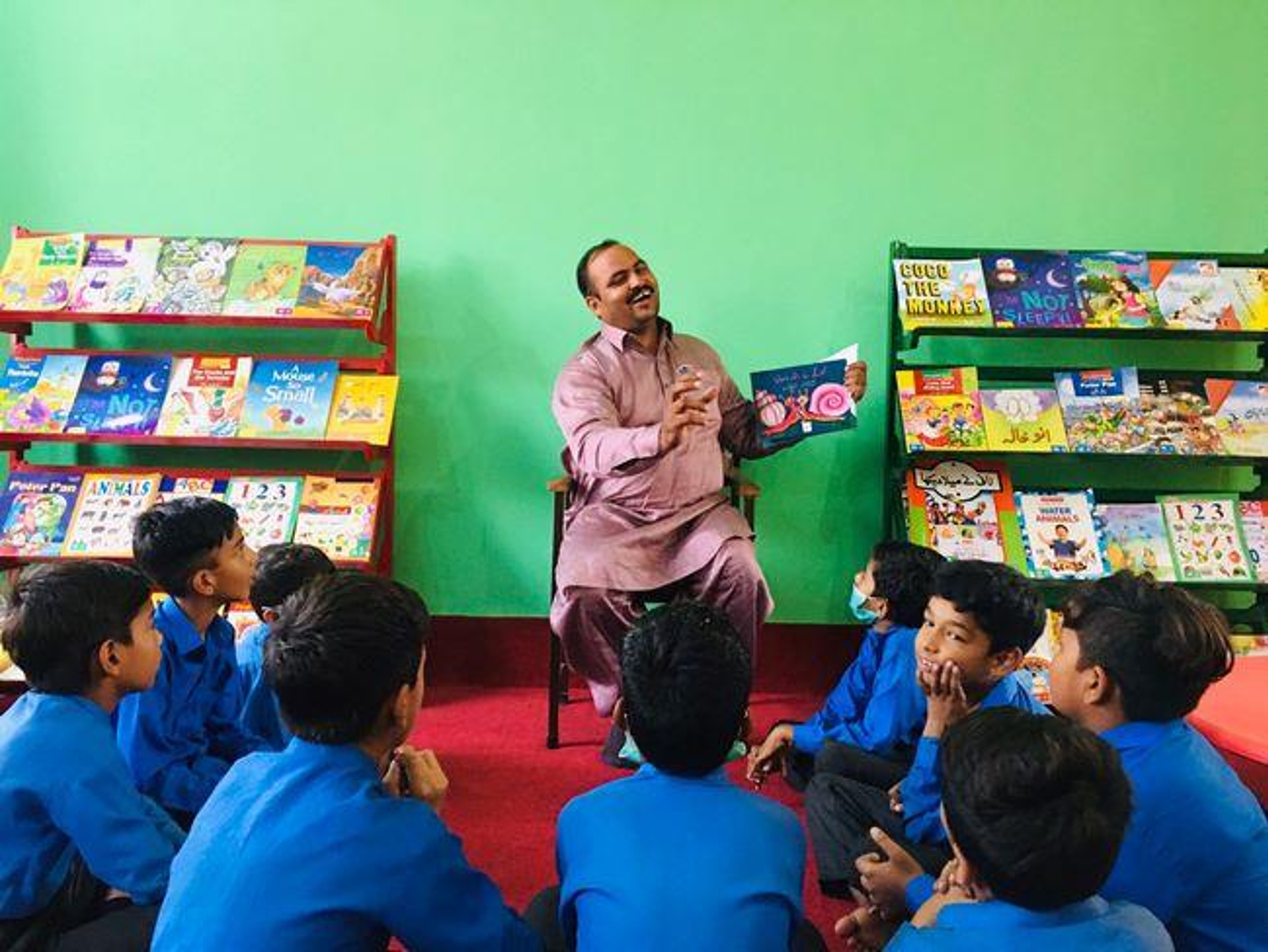
Storybook development to build the children’s book publishing industry in Pakistan
A children’s book publishing industry already exists in Pakistan, and although the range and quality of books is improving, mainly due to the efforts of individuals and small local organizations, there are still significant gaps in the market for high-quality storybooks in local languages for children at the earliest stages of their reading development.
To address this need, we plan to conduct a series of author and illustrator workshops to create new storybooks. These titles will be produced in collaboration with private book publishers, academics and writer and illustrator networks and used as examples for future development.
Through this project, we will produce 15 high-quality original titles, which will be shared with primary schools throughout the country. Room to Read will work with local partners and publishers to identify an initial distribution channel for the storybooks in order to reach as many children as possible. Books will be included in each of the libraries, increasing the number and quality of books children have access to.
Out-of-school children and school closures
The literacy landscape in Pakistan has changed since we first developed our Pakistan feasibility study in 2018. The COVID-19 pandemic has caused nationwide school closures, which will cause significant learning loss and an increase in Pakistan’s already large out-of-school student population. In response to school closures, we shifted our programming to distance modalities, including TV and radio broadcasts. For example, in April 2020, the government of Pakistan launched a televised education program. The television channel broadcasted free educational content for children in Grades 1 through 12 and is commonly referred to as ‘Teleschool.’
Room to Read sees these new educational modalities as an opportunity to support out-of-school children. We also plan to develop read aloud videos, using local language storybooks, that demonstrate how teachers, librarians and caregivers can deliver engaging reading activities to children.
Refugee population storybook development and distribution
As violence in Afghanistan surges, concerns around a new refugee crisis are becoming an urgent issue. Pakistan is already home to 1.4 million Afghan refugees. Room to Read is well positioned to contribute learning materials that can support these populations through local nonprofit organizations. In response to this urgent need on the border, we will adapt at least 20 storybooks for children in refugee communities. We plan to print 6,000 copies of each of these titles and distribute them to local educational programs. The distribution will include clear guidelines, translated into local languages, on the use of the materials to maximize their effectiveness and longevity.
Enhanced policy discussions with government partners
Room to Read will advocate for the importance of libraries for young learners in primary schools with our Pakistan government partners. One essential benefit to a multi-year project engagement is the opportunity to demonstrate the success of our programming to our government partners and create a path for future government investment in primary school libraries. 